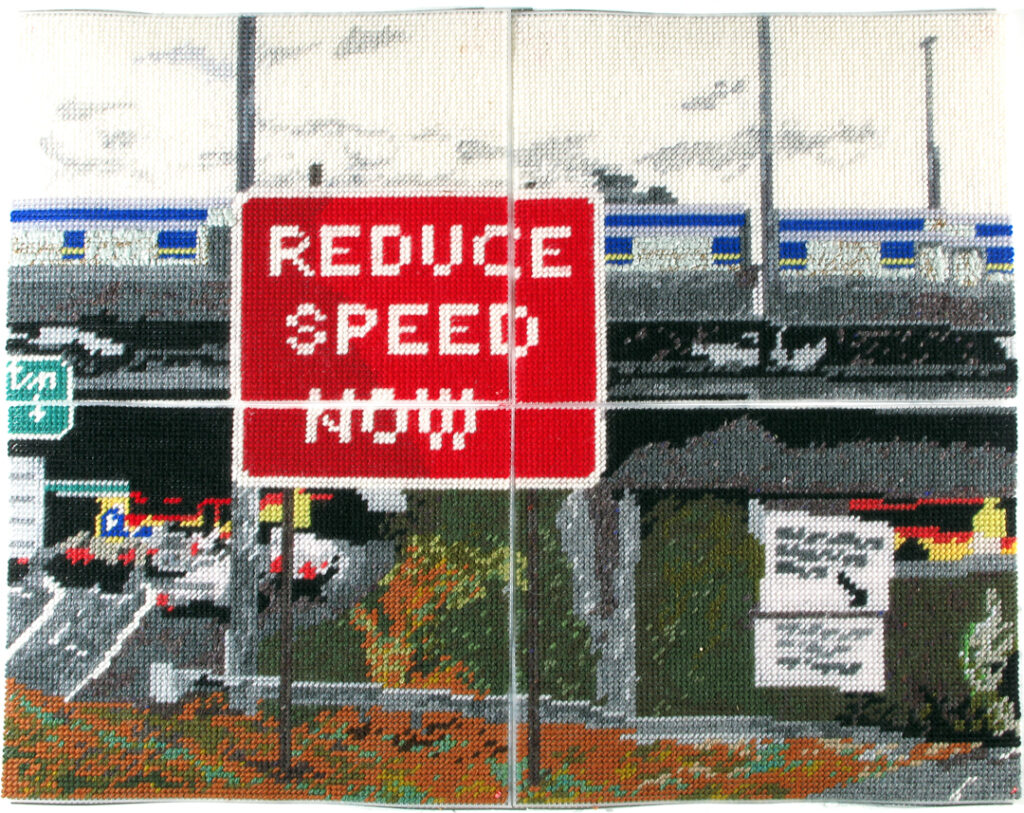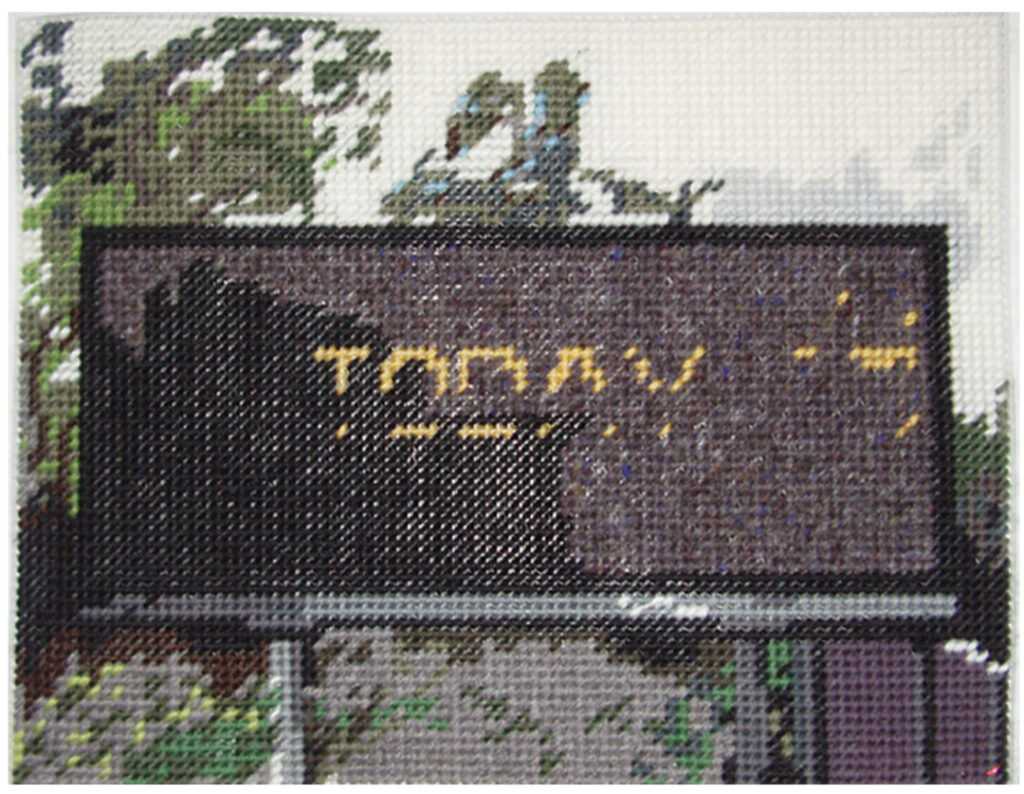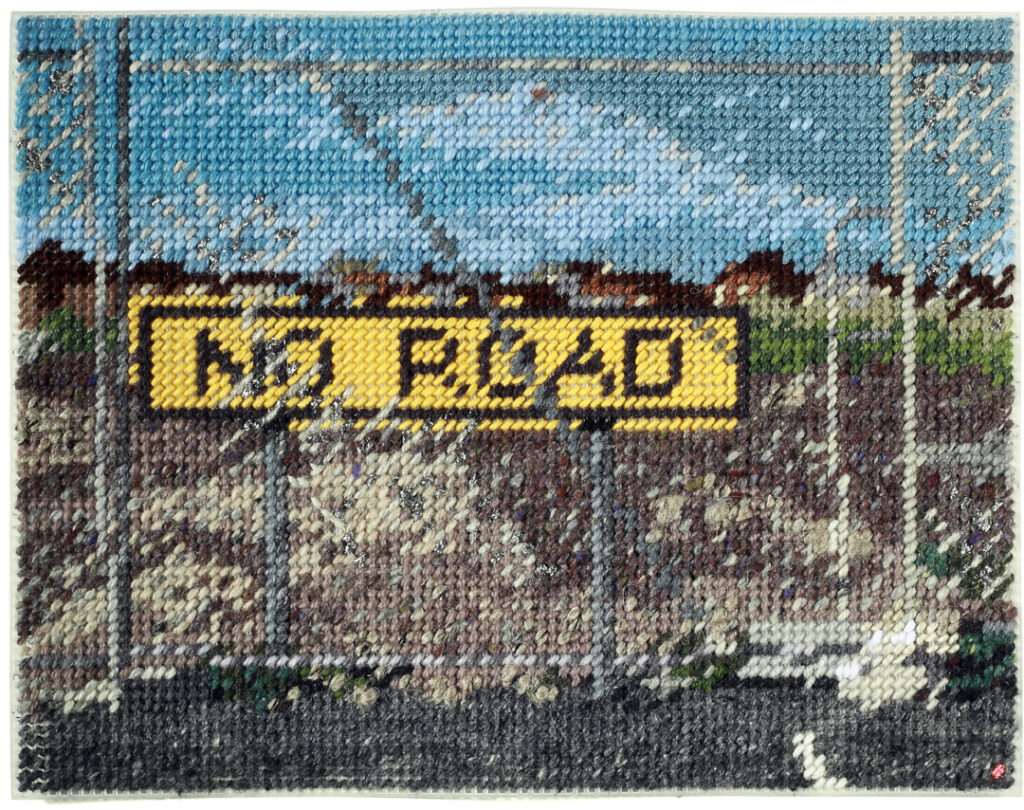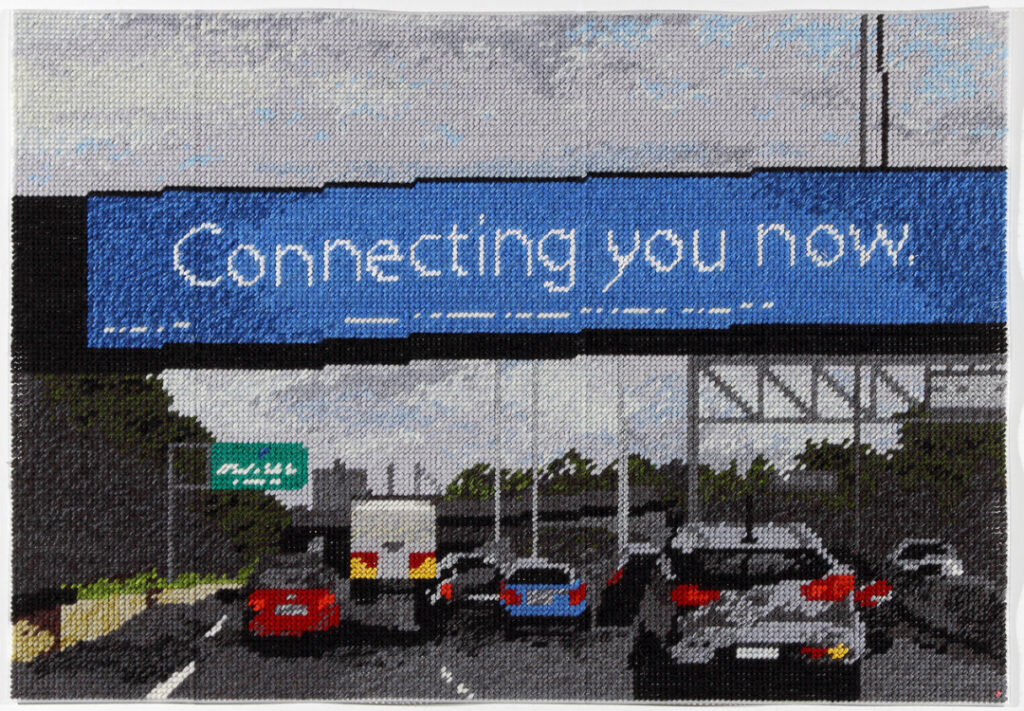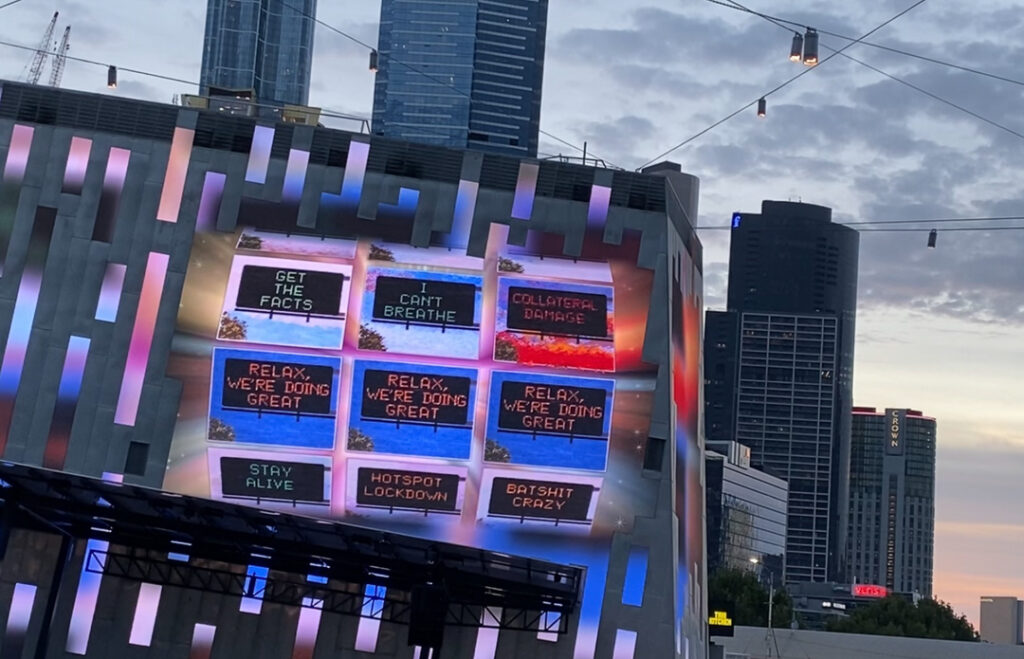
Michelle Hamer reflects on two decades of making tapestries that lovingly render the emptiness of our urban road signs.
For nearly 20 years, Michelle Hamer has been reflecting on the meaning of road signs through her ironic tapestries. These enigmatic messages are devoid of any human presence. They emit sentences that purport to be caring, but this concern is undermined by their lifeless form.
The absence of care is manifest in mechanical decay as pixels break down. This lifeless communication is contrasted with Hamer’s purposeful weaving, each pixel stitched by hand.
While much street art aims to activate public spaces by signalling a human voice, Hamer’s work does the opposite. She shows the absence of this presence in the messages that surround us. But rather than lead to pessimism, it prompts us to re-activate our public sphere, as evidenced by Hamer’s beautifully crafted works.
✿ Have you noticed any change in road signage over the two decades that you have been documenting it?
I’ve always felt that the language of the street—instructional, advertising and graffiti—reflects the bigger picture fears and aspirations of our societies. It’s the nuance and mood over a range of language rather than the specifics of any one sign that interests me, although there are also so many individually that I love.
When I first began documenting and collecting language, I was drawn to how darkly humorous and how much variety there was. It felt like there were many voices, perspectives and a lot of nuance. By 2011 there were a lot of mixed messages, many still clever but at times overtly optimistic, in denial of real-life events like the Global Financial Crisis, and the “you’re either with or against us” post 9-11 sentiment held strong undercurrents (particularly in the US).
Early 2020 was interesting as there was a brief moment of global catastrophe (COVID-19) uniting people. I was inundated with photos people were sending me of signage from around the world. That collaborative potential appeared to hold strength in amongst the language of the Women’s March and Black Lives Matter movement but ultimately gave way to the divisions that I’d been noticing building over the decade prior. Fear, misinformation, coopting and re-coopting of language and divisive rhetoric became prominent.
In the past year the official and branding language that I’ve noticed has been amongst the most benign I can recall. I’m having to make myself look rather than be drawn to it. I question if this is occurring in contrast to the toxic language playing out online and in the streets, which has become increasingly sloganistic and frenzied. Nuance, criticality and accuracy of language appear to be valued less as polarisation intensifies. This is something I’ve only previously understood as a historical phenomenon so I document it with concern.
- Michelle Hamer, 2006, ‘Reduce Speed Now’, 53cm x 68cm
- Michelle Hamer, 2007, Only A Little Bit Dead’, 53cm x 68cm
- Michelle Hamer, 2007 ‘Only a Little bit Embarrassing’ 53 x 68cm
- Michelle Hamer., Today dropout, 2005, 26x35cm
- Michelle Hamer, Give up your day job, 136x55cm, 2009
- Michelle Hamer, Blocked out, 2005, 26x35cm
✿ Has your weaving technique changed over the years? What’s the largest tapestry you’ve done? Would you consider moving onto a large loom or do you prefer to keep it on your lap?
The size and physical expression of my works have changed over time. I’m interested in how techniques relate to what I’m exploring. Yet I think the slowness, the nuance of the language and the detail of the context perhaps allow space for as much of what isn’t directly said as what is.
I enjoy the rhythm and familiarity of stitching but I also like to push the boundaries of where else my practice can go.
The largest works I’ve done involve hand stitching barrier tape through debris/construction mesh (115 x 300cm). It’s a practice that perhaps becomes more sculptural as the works are bigger than my body so almost by default I become literally entangled in the work.
I’ve also made some larger stitched pieces (67 x 100cm) and created triptychs or series that become part of digital or video works which is a fun way of shifting the scale for me too.
- Michelle Hamer, No Road, 2011
- Michelle Hamer; photo: Marc Morel
- Michelle Hamer, One Wall Two Jails, 2017, barrier tape on polypropylene debris mesh, 113x227cm
- Michelle Hamer, Are you having a good night, 2019, 51x198cm
- Michelle Hamer, Federation Square, Melbourne
✿ Are there other weavers or artists that you have an affinity with? How do you compare your work to Jenny Holzer?
I don’t tend to compare my work to other artists, perhaps due to how my practice has developed but there are many I love and learn from. I’ve always been a huge fan of Jenny Holzer’s work. I particularly love Holzer’s declassified series. It hits me hard in person and stays with me.
Our practices circle some similar subject matter, materials, undercurrents and approaches but in many ways are the inverse of each other. Her best-known works are loud public/street facing and overt statements claiming space with mine generally more about the nuance, documentation and being present/observant of the public space we occupy. Although she has done many more intimate works and I’ve had very public video works shown recently.
Perhaps my work wouldn’t have come about without her’s coming first. Both our works bear witness and reflect back the language and movements of our times particularly in regard to the street/public realm.
✿ What do you think are the prospects for the human race? Do you imagine that the machine and the algorithm will eventually control most of our lives? Could that be a good thing?
This question is way out of my league but I think we’re already largely controlled by machines and algorithms. Part of my interest in the language of the public realm is this feedback loop. I’m less interested in the binaries of it, or people, being a good or bad thing per se. I am interested in how society responds and what we learn from history as well as what new opportunities it opens up.
✿ What are the themes that you are working with at the moment?
I’m working on themes of gaslighting in everyday language. How people are disbelieved and dismissed. The lens I’m currently using is healthcare and for this project, I’ve received official documentation from around the world which forms the basis of the project. It includes hand stitching and, for the first time in my practice, screen printing. A few monoprints combine both. Including printing onto a hand-stitched base and printing this printed stitched work back onto the paper.
I undertook a residency in Eastern Europe in mid-2023. The politics and language of the street alerted me to undercurrents I was more naive to in Australia at the time so this is something I’m aware of and navigating.
Visit michellehamer.com and follow @michelle_hamer

